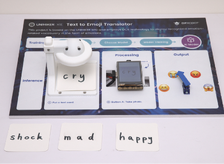INTRODUCTION
This project leverages the power of magnetic sensors to measure magnetic fields and transforms these measurements into visual graphs, providing a tangible representation of abstract physical phenomena.
Designed primarily to aid students in their exploration of forces, magnetism, electric charges, and electromagnets, this system serves as a bridge between theoretical knowledge and practical application. It not only enhances our physics curriculum but also ignites a passion for scientific inquiry among our young learners.

HARDWARE CONNECTION


KEY INFORMATION
The Gravity: Linear/Analog Hall Sensor is a high-precision device that measures magnetic field strength using advanced Hall effect circuitry. It converts magnetic induction directly into voltage output, responding uniquely to magnetic fields: the output is stronger when facing the south pole and weaker when facing the north pole. The specific relationship between the output voltage and the magnetic field strength has been shown as follows.

In the condition of UNIHIKER Usage, when the S pole of the magnet faces the sensor detection area, the indicator light on the sensor illuminates, and the analog output value is greater than 2048. When a magnet's North pole is facing the sensor detection area, the indicator light on the sensor illuminates, and the analog output value is less than 512. (When no magnetic pole is detected, the analog value is between 500-520.)
Visit the link below to get more information:
CORE CODE
Display the magnetic field strength on the interface using simple calculations.

DISPLAY

Please click the link below for the demonstration video.










